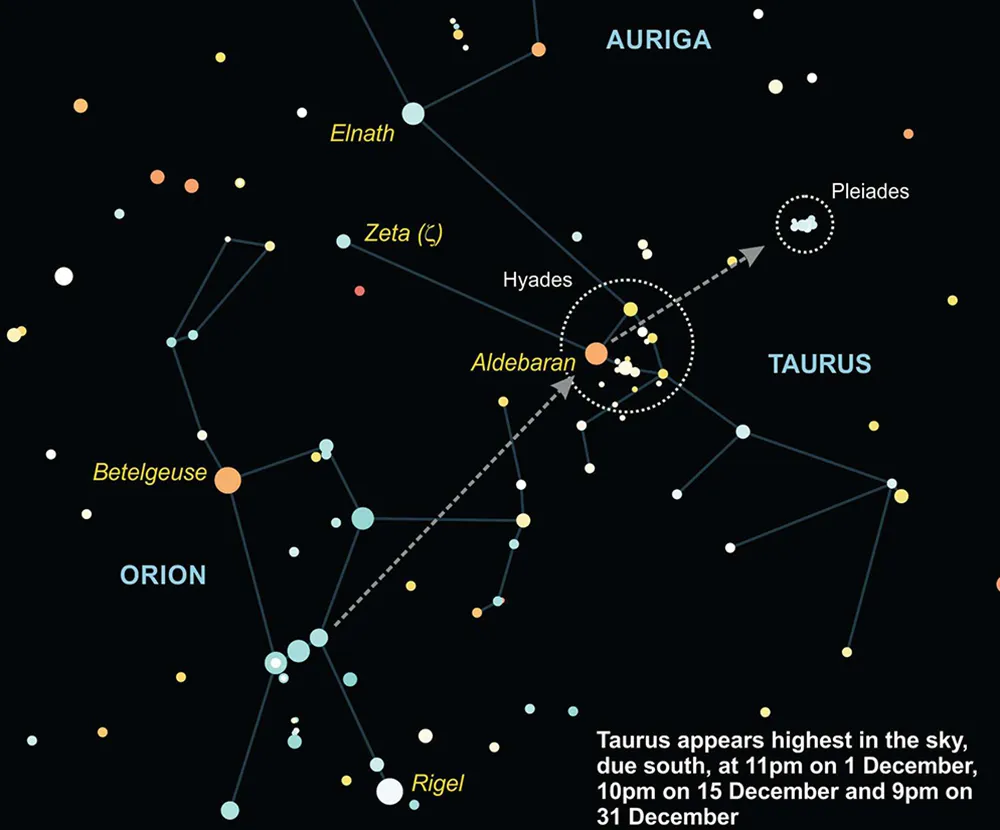Taurus the Bull is a prominent late autumn constellation. It outlines the head, horns and upper torso of a swimming bull, the form taken by Zeus to win the affections of a Phoenician princess.
Its primary star is the red-giant Aldebaran, the 14th brightest star in the night sky. Extend the line of Orion’s belt up and right from the UK and Aldebaran is the first bright star you meet, its orange hue being very obvious.
Aldebaran lies at the end of the southern arm of a sideways V-shaped pattern of stars formed from stars in the Hyades open cluster. Born out of the same cloud of material 625 million years ago, many Hyades stars have turned reddish due to their great age.

Located 153 light-years away, the Hyades is the nearest open cluster to Earth. Although Aldebaran appears part of the group, this is a line-of-sight effect. Aldebaran is 65 light-years away, positioning it roughly halfway between us and the cluster. The Hyades ‘V’ represents a bull’s head, Aldebaran marking one of its eyes.
Extending Orion’s belt line past Aldebaran eventually brings you close to the famous Pleiades open cluster, also known as the Seven Sisters. This is three times more distant than the Hyades and much younger, with an estimated age of around 100 million years. The Pleiades is distinctive, easily visible to the naked eye and a real treat through binoculars.
Extend the arms of the Hyades ‘V’ and eventually, you’ll arrive at the stars marking the bull’s horn tips; Elnath to the north and Zeta Tauri to the south. Star charts often show Elnath linked to the stars of Auriga the Charioteer to the north. The star used to be known as Gamma Aurigae before being reassigned to Taurus by the International Astronomical Union in 1930.
Read more:







